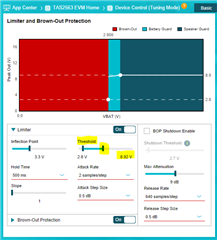Hello,
I was looking at the data sheet on ways to adjust volume (DVC_PCM), and it looks like the register information is not present in the data sheet. I eventually found it in a post here on e2e: https://e2e.ti.com/support/audio-group/audio/f/audio-forum/928138/faq-tas2563-adjusting-digital-volume-control-using-i2c
So, my question is if this information will make it's way in the data sheet soon? Also couldn't find ways to access LIM_MAX_ATN, LIMB_TH_MAX registers. Is there other ways users usually set these values if they ever have to?


